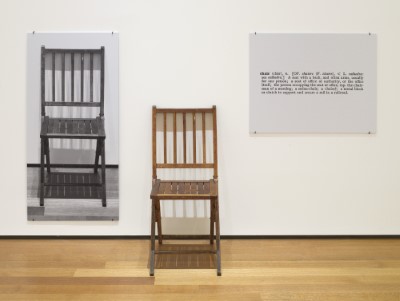10 Chairs That Changed Art: From Velásquez to Warhol
The subject of the chair has been explored throughout the history of art. One of the first iterations comes from the art of Buddhism. This began with depictions of Buddha meditating at the bottom of a tree, and a chair being depicted either through painting or sculpture. Since the renaissance the chair has continued to be explored through various mediums in art, and remains a subject of exploration for many artists.
It has been tackled from the Spanish Golden Age with Velásquez, but really found its way in Impressionism, with Degas’ 1860 painting, and possibly the most famous of all, Van Gogh’s 1888 work ‘Van Gogh’s chair’. It was the later appreciation for this painting that really started a movement, where the chair was no longer merely a prop, or an object that faded into the background of the painting, but was instead at the forefront. And it was the subject of the painting.
Diego Velasquez- Portrait of Prince Phillip Prospero (1659)
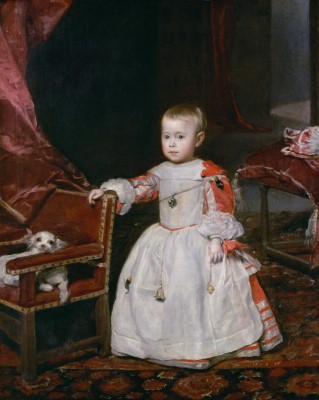
The heir to the Spanish throne rests on a chair. The chair could symbolise the throne, and if so his arm resting on - rather than having the prince sit on it - could be artistic foresight from Velasquez. As Prince Phillip would never ascend to the throne, and would die before he got the opportunity.
The chair also gives the artist the opportunity to place the dog on the throne, in contrast to Prince Phillip. The dog is seated but seems to be full of vitality, and this emphasises the sickly, fragile state of the heir to the throne.
Edgar Degas- Le Fauteuil (1860)
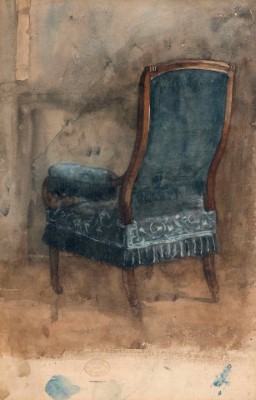
Degas was one of the first artists to explore the idea of the empty chair. In this depiction Degas has turned the chair away from the viewer’s eye. This means that through turning the object round we now see it in a different light. Normally we would focus on the seat and the backrest of the chair, but now we are drawn to the shape of the chair instead. The blue of the chair cuts through the monochrome background, but there is still a mystery to the chair that will forever remain.
Vincent van Gogh- Chair (1888)
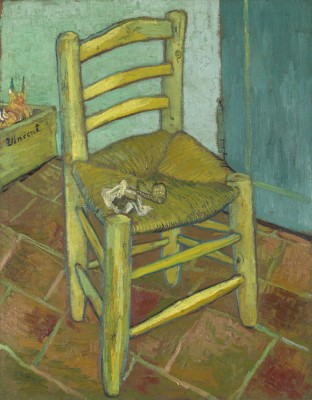
Perhaps the most distinguishable, and notable of all the chairs depicted in art. Van Gogh portrays his chair empty but with his pipe resting on it. It was completed during Van Gogh’s turbulent time with Gaugin, during their stay in the distinctive Yellow House. Van Gogh got the idea from an obituary image after Charles Dicken’s death, where they portrayed the writer’s empty chair.
Van Gogh also painted Gaugin’s empty chair, but it is his own chair that is far more recognised and distinguished. This is perhaps because of a deeper meaning behind the picture. This was a period of Van Gogh’s life where his mental health was beginning to fail him. The pipe, which Gaugin suggested he use as a cure to melancholy, lays abandoned on his chair. With the painter out of shot, perhaps even gone?
Henri Matisse- Lorrain chair (1919)
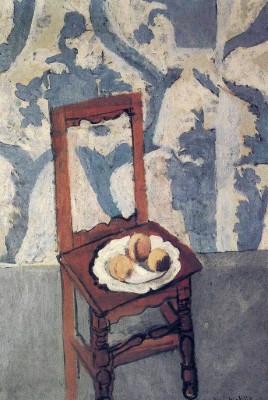
Matisse refused to accept objects just for what they were commonly used for, and the Lorain chair is a great example of that. Matisse recognised that the view of a perception of a chair changes depending on how it is used, and what is placed upon for the chair. For is a person is seated on the chair, our eyes are drawn to the person and the chair fades into the wallpaper.
At first, it seems like Matisse has used the Lorain Chair as a way of framing the peaches in the painting. But once the viewer has seen the peaches, we see the wonkiness of the chair, and also through the hole in the backrest we now have the wallpaper framed through the chair. Matisse has expertly crafted the journey for the viewer of the painting, and has in fact emphasised both the subjects of the painting - the peaches and the chair - but also the wallpaper or the background of this artwork. Which is no mean feat!
Pablo Picasso- Chair (1961)
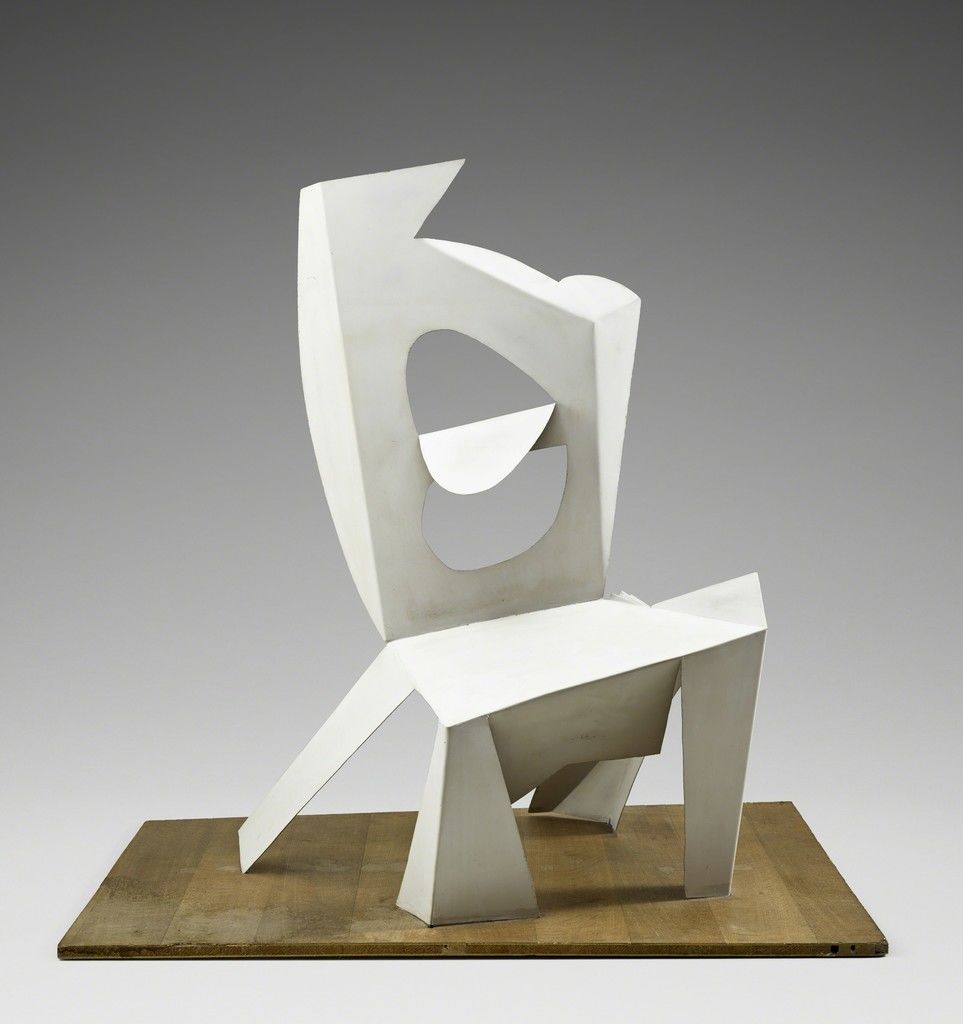
The first chair on this list that is not a painting, but is actually a physical creation of a chair. It falls in the grey area between an object of use and sculpture. Adopting a minimalist style the sculpture resembles a chair, and supposedly could be sat on, but Picasso has stripped away any feeling of comfort from the chair. Although it is deeply asymmetrical, and flawed as a design, the chair still remains aesthetic to the viewer and there is something pleasing about it.
Joseph Beuys- Fat Chair (1964)
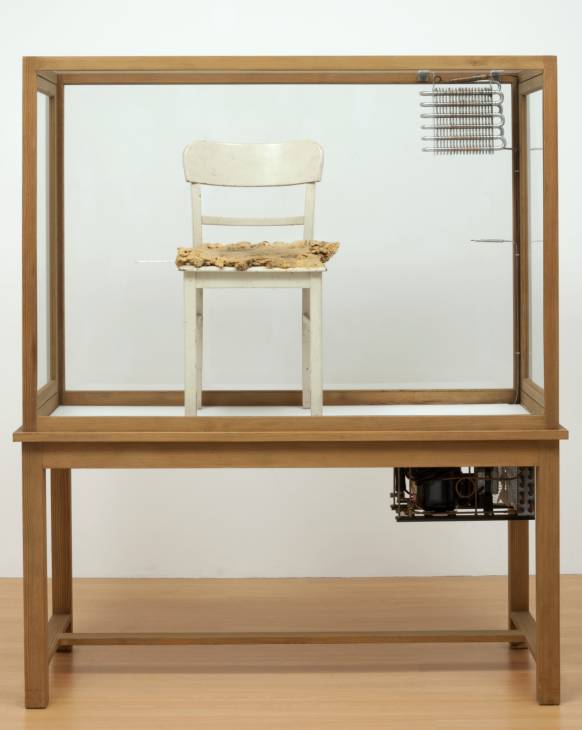
A world away from Picasso. Joseph Beuys creates a design by using a standard, aged chair, and placing fat upon the seat. There is no aesthetic please, nor is it intended by the artist. Beuys has only used rough, natural materials in this artwork and the realness to this work yields a strange beauty.
Beuys is opposing the rationality in humans, and this work is part of a greater movement by the artist, often labelled ‘shamanism’. He uses these natural materials, and in other works cult-like ceremonies, to underline the importance of the irrational and mystical that lie within humans.
Joseph Kosuth- One and Three Chairs (1965)
This conceptual artwork features a photo of a chair, the actual chair itself, and a blown-up dictionary entry for the word chair. The photograph is enlarged to be the exact same size of the chair, and interestingly each time this piece was exhibited it was unique to that venue. This is because the instructions for the installation were openly shown by Kosuth. It asks the installer to choose a chair, place it against a wall where it will stay, take a photograph of the chair, and then hang the photograph up to the left of the chair (with the dictionary entry to the right).
This means that for every different exhibition the dictionary entry is the same, even though the chair changes. Kosuth explores his concerns between a concept or idea and the mode of presentation. Even though the physical body of a piece of art can change, the idea it embodies remains constant, or at least for One and Three Chairs this was the case. With the three aspects to the same chair (language, picture, and referent) Kosuth is exploring the relationship between them, and also asking the viewer what is real here?
Andy Warhol- Electric Chair (1971)
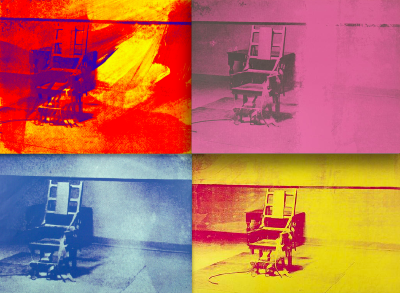
Andy Warhol’s haunting print asks us a question. It is not about whether the death penalty should exist, or even what method should be used to administer it, but it simply asks: why a chair?
By centering the focus on the chair the viewer cannot escape the grizzly reality of the piece of furniture used to administer a lethal shock. In addition to this, the focus on the electric chair also seems to remove the chair from the context of the room. The distortion on some of the prints brings the image to life, and seems to mimic a vibrating effect. Thus taking the viewer to the moment of execution.
Tom Friedman- Untitled (Wooden School Chair) 2002
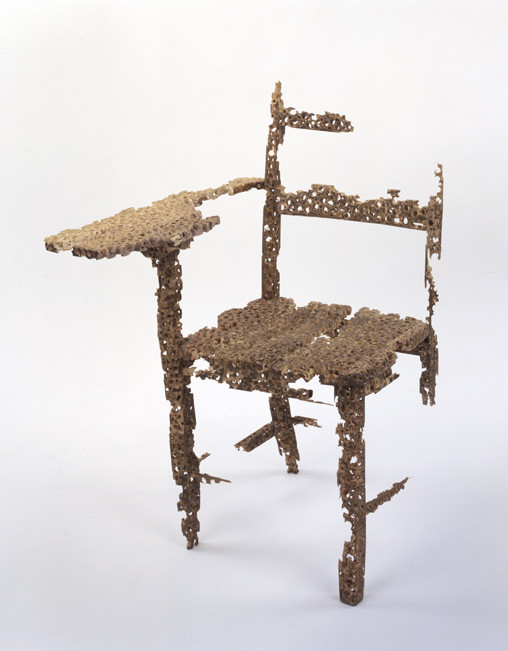
Friedman follows a well-trodden path in conceptual art, that the idea or meaning is more important than the aesthetic. The artist has drilled holes in the chair repeatedly, but the school chair held its structure. Apart from the top right corner of the backrest, the back left leg, and the part of the chair attaching to the back of the desk.
The school chair can be identified by almost anyone viewing the art, and the simple action of drilling hole after hole into a normal chair epitomises the concept of simplicity, as well as the mundane elements of everyday life. But this same action is also chaotic, all that is left is a skeleton of the object due to the irrational and erratic behaviour of Friedman. Therefore the artist is simultaneously exploring ideas of simplicity and repetitive action, and the portrayal of chaos in an otherwise normal world.
Tadashi Kawamata- Please Take a Seat (2013)
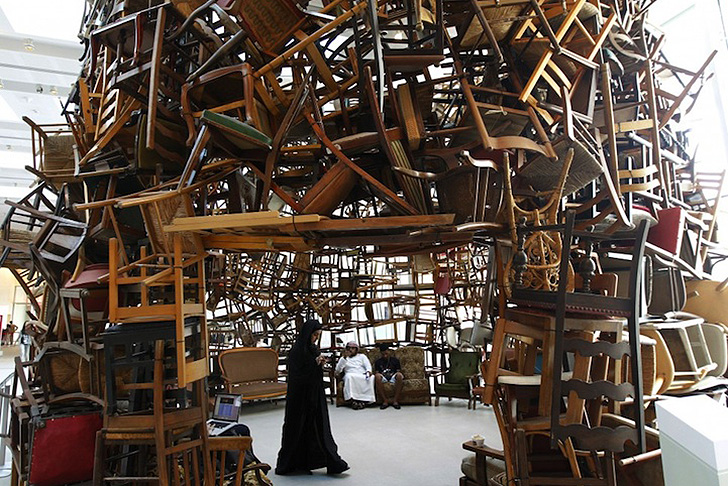
Kawamata further explores the idea of use. By creating an opening, and a room with chairs, they have become building blocks and their use has changed. But he still invites you to sit on comfy chairs and sofas within the hollow structure. Kawamata is also showing how significant recycling is, and can be in our future. Through stacking 1000 chairs, he has changed how these items are used and even created shelter for those within. Most of all though it is visual art on an epic proportion.
FAQs
1. What is the earliest chair depicted in art?
A sculpture dating back to 2800-2700 B.C. depicts a musician playing a harp, whilst sitting in what appears to be the traditional form of a chair.
2. What is the most famous chair depiction in art?
Van Gogh's Chair is the most famous painting featuring a chair. In this case the chair is the subject. You can visit this painting at the National Gallery in London.
For more interior inspiration, have a look at our social media accounts and keep up to date with the latest trends .

